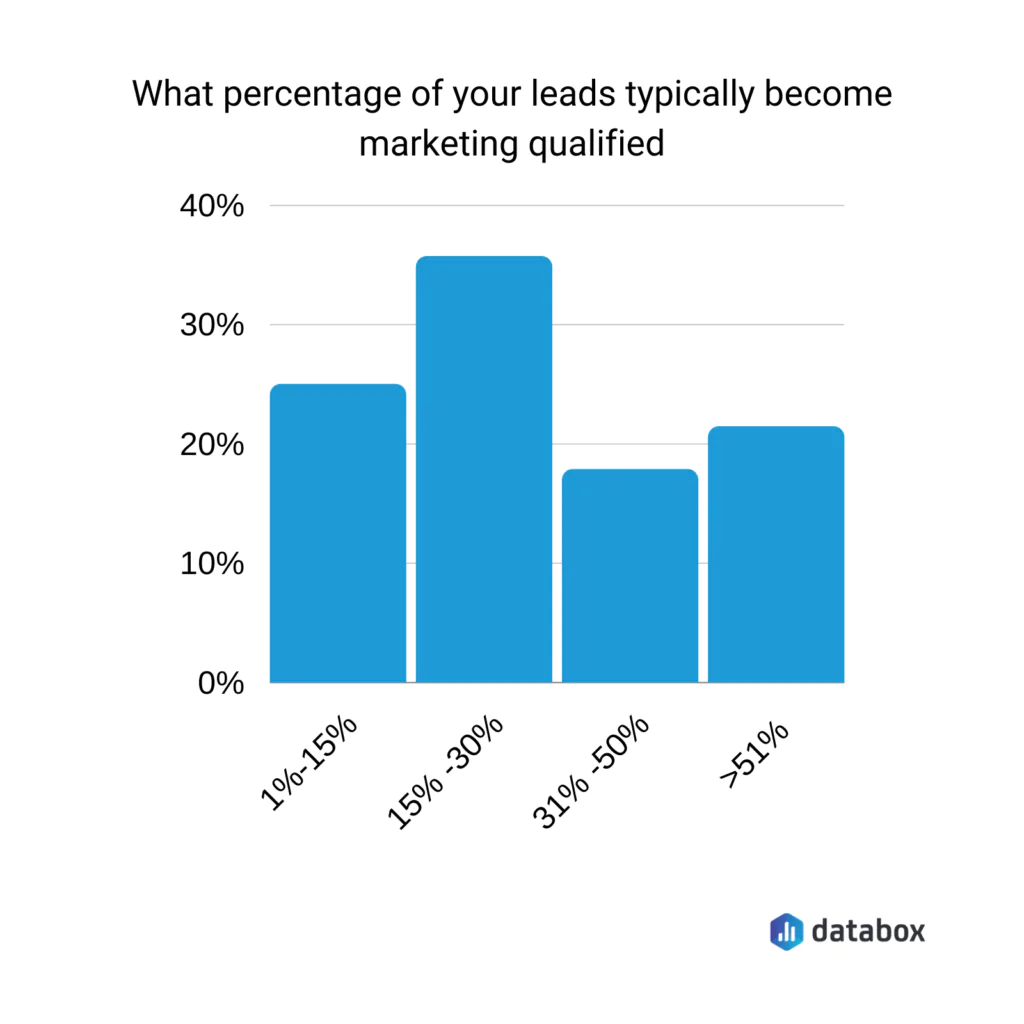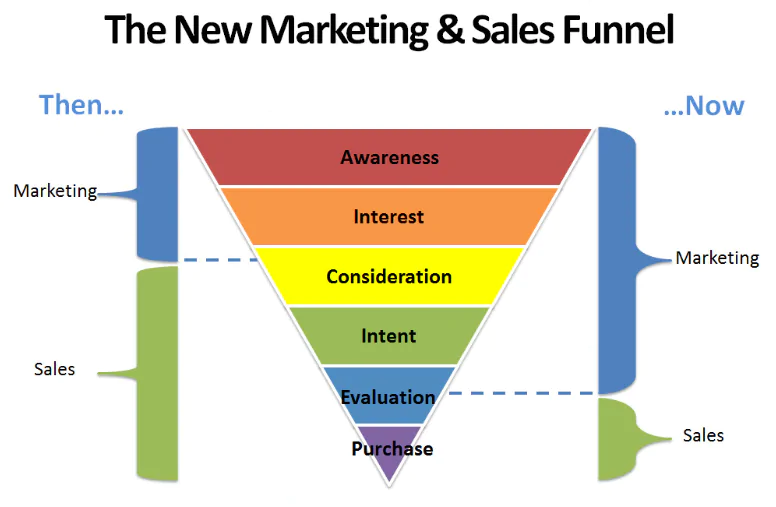Lead generation is one of the biggest challenges businesses face in today’s digital, omnichannel market. A marketing qualified lead (MQL) is more likely to convert to a customer than a first-time visitor.
In this post, you’ll learn how to optimize your marketing funnel to increase your MQLs, set measurement criteria, and offer value at every point in the buyer’s journey.
If you’re one of the 53% of marketers who spend half of your marketing budget on lead generation but still struggle with mediocre results, the information in this article will change the way you strategize your current and future marketing campaigns.
Let’s dive in.
Key Takeaways
- Marketing qualified leads are leads that have indicated an interest in a brand, and the marketing team has vetted as credible.
- Companies take an individualized approach when it comes to identifying lead scoring criteria.
- When MQLs transition into the sales funnel, they become sales qualified leads (SQLs).
- To increase MQLs, businesses should focus on identifying standard MQL criteria, segmenting leads, creating custom content for different stages, offering value, creating omnichannel touchpoints, and having a clear call to action (CTA).
What Are MQLs, and How Do You Identify Them?
A marketing qualified lead is a potential customer that has indicated an interest in a brand, service, or product. MQLs are typically scored based on criteria the marketing team determines.
Lead scoring can vary widely between industries and companies. 89% of marketers have clearly defined MQL criteria they use to score leads.
Some businesses might look at downloads or demo requests to measure MQL, while others have a more complex scoring system that analyzes first-person data such as social media interactions, blog posts read, and reoccurring website visits.
Not every lead will become a marketing qualified lead. A Databox survey found that, on average, approximately 35% of leads typically become MQLs.
Source: databox
6 Ways to Turn Leads Into Marketing Qualified Leads
MQLs are not the same as SQLs.
A sales qualified lead (SQL) is a lead that is interested in making a purchase and becoming a customer. This is the next step in the process when MQLs are ready to transition into the end stages of the sales funnel.
Before that can happen, you need to turn your leads into MQLs. These six methods will help you achieve those goals faster:
1. Define MQL Criteria
The most important way to improve MQLs is to clearly define your brand’s criteria to measure data. These tips will help you identify marketing qualified leads:
- Have your sales and marketing teams collaborate to agree on the definition.
- Start with your target audience and buyer personas to set measurable metrics.
- Observe consumer behaviors to identify actions that typically lead to sales. This could include a minimum amount of time spent on a product page, the number of website visits, CTA clicks, etc.
- Regularly revisit lead definitions to update the criteria.
Once you’ve determined how the marketing team will score leads, you can custom-design automation processes and tools to nudge leads toward becoming MQLs. Clearly defining your criteria will also enable you to measure progress and gauge the success or failure of marketing campaigns.
2. Segment Your Leads
Not all leads are equal. Treating them as such can have a more detrimental impact on your marketing qualified leads than you might realize.
Gather sales intelligence about your leads to determine what stage of the buyer’s journey they’re in and where their interests lie. This data helps your marketing team take a tailored approach to guide leads down segmented funnels.
3. Create Customized Content for Different Funnel Stages
Trying to convert people at the top of the sales funnel is one of the biggest mistakes many businesses make.
The funnel has evolved over time. For most companies, marketing now plays a bigger role in the customer’s journey than sales, which means businesses need to create lead-generation content for each stage of the funnel.
Source: crazyegg
The content that a lead interacts with at the consideration level should not be the same as the awareness level. For example, a first-time visitor to your blog is highly unlikely to book a product demo. They might, however, be interested in signing up for your newsletter or downloading a free ebook.
Don’t filter all new leads straight to the top of your funnel. Define clear stages and assign content guidelines and metrics to understand when a lead becomes an MQL and when that MQL becomes an SQL.
4. Offer Value
One of the most impactful ways to improve marketing qualified leads is to provide added value through content and messaging. The goal is to engage with leads before trying to sell them something.
Share guides, tutorials, educational blog posts, whitepapers, ebooks, and other valuable resources to help educate people about your industry, business, and the products or services you offer.
5. Create Multiple Omnichannel Touchpoints
Sales rarely occur after a single touchpoint. In fact, the general rule of thumb is that it takes an average of eight marketing touchpoints before a sale.
Companies that use three or more channels see a 287% higher purchase rate than single-channel campaigns. Most people don’t shop exclusively from one device. 86% of shoppers regularly switch between channels.
What does this mean for increasing marketing quality leads?
Businesses should vary their touchpoints to engage with MQLs across multiple channels. Touchpoints could include content such as:
- Blog posts
- Tutorials
- Quizzes
- Emails
- SMS
- Whitepapers
- Ebooks
- Webinars
- Presentations
- Product Demos
- Social media giveaways, posts, and stories
- Podcasts
Customize each touchpoint to best match the platform and the customer’s stage in their journey. For example, TikTok advertising relies on short-form videos, whereas website downloads would be better suited to eBooks, PDFs, and whitepapers.
6. Have Clear CTAs
Seems obvious, right? The whole point of marketing is to prompt people to take a specific action.
However, a surprising number of brands fall short on this step. They either don’t include a clear call to action, or they try to be clever and imply the intended action.
Clarity is always the best option. Don’t leave the action up to the client. If you want to guide a lead to an MQL and then an SQL, you must provide clear directions to steer them through the marketing and sales funnel to your intended outcome.
Invest in Your Marketing Qualified Lead Strategy for Long-Term Success
Not everyone who visits your website is going to become a customer. Visitors may be researching information on your blog, looking for a new job, doing competitor research, or just browsing.
Setting MQL criteria allows a business to identify the moment a visitor presents the opportunity for a conversion. The highly individualized lead scoring system varies from company to company, but it pinpoints a critical chance for your marketing team to maximize lead conversions.
Prioritizing and nurturing your marketing qualified leads will set your business up for a successful future.
Are you ready to increase your MQLs? Schedule a demo to see how our data-driven marketing automation and lead nurturing campaigns can benefit your business.
Featured Image: istockphoto







